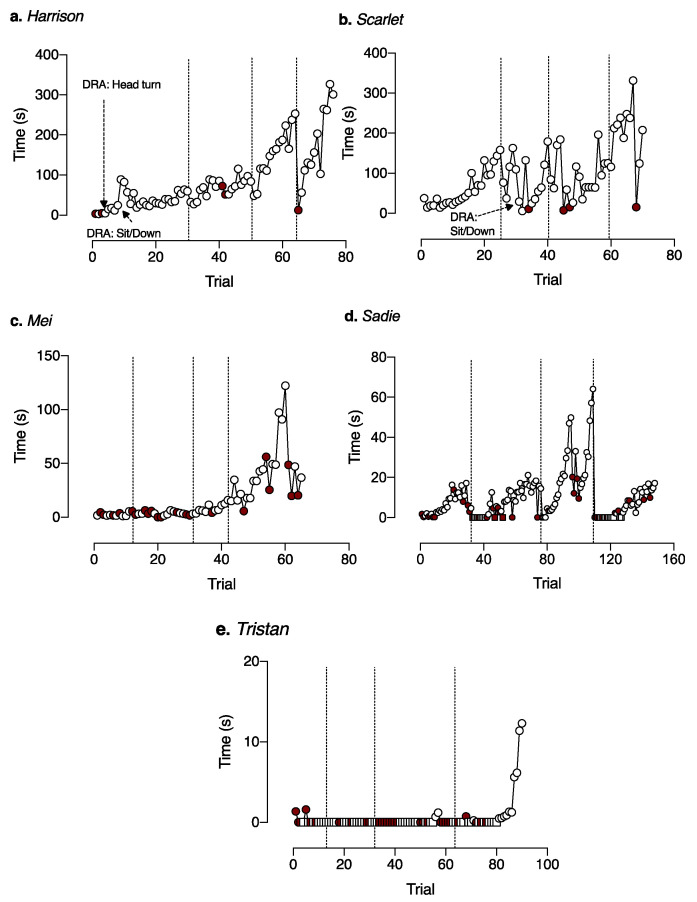Figure 3.
Trial-by-trial data for each dog (a. Harrison; b. Scarlet; c. Mei; d. Sadie; e. Tristan) during Treatment. On each trial, we plotted either the time the dog was alone (for successful trials with no PB; open symbols) or the latency to PB on unsuccessful trials (filled symbols). Circle symbols indicate that the criteria were such that the owner was exiting the house on that trial. Square symbols indicate criteria were such that the owner was staying inside the house on that trial. For all trials in which the owner remained in the house, time dog was alone are recorded as 0 s. Latency to any PB that occurred while the owner was still in the house was recorded as 0 s. Thus, open circles with latency 0 s indicate the owner successfully exited the house without the dog exhibiting PB (DRO + 0 s), whereas open squares indicate a successful trial in which the owner did not exit the house. Time alone on successful trials might exceed the DRO or DRA time criteria if (1) the dog was engaged in vigilant behavior on a DRO and we waited for vigilant behavior to end before enforcing the DRO contingency (vigilant behavior was not reinforced but was not considered PB), or (2) the dog did not engage in the target desirable behavior for some time on a DRA. Dotted vertical lines indicate the end of one session and the start of a new session.

